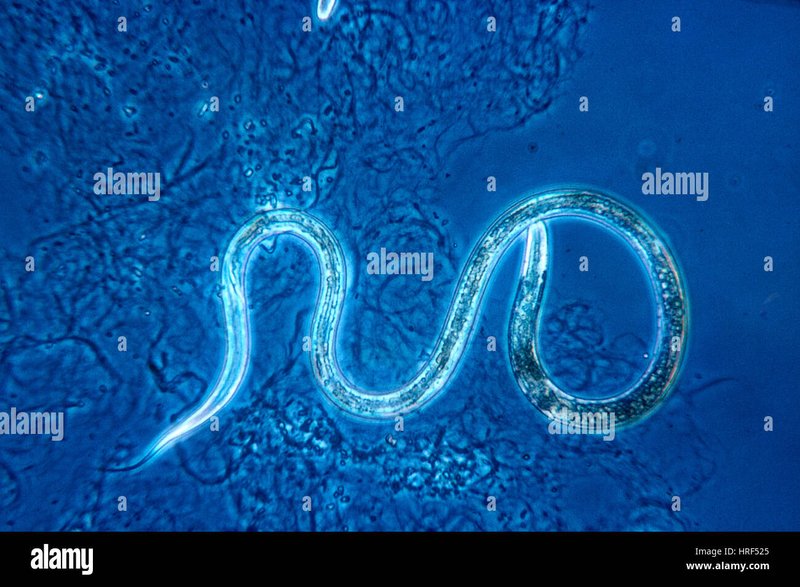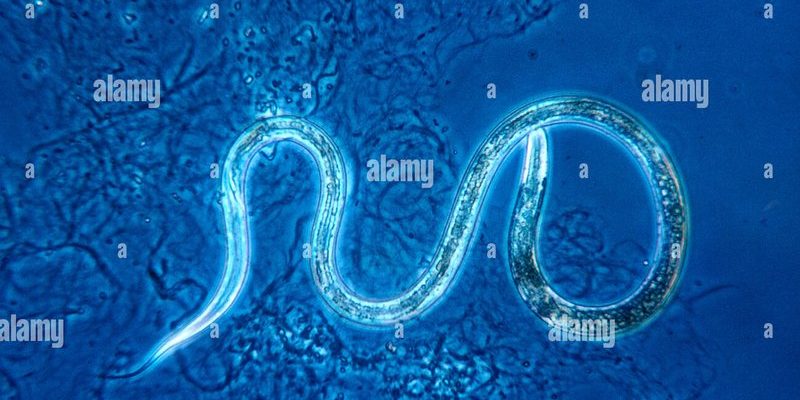
Now, you might wonder, “Why should I care about vinegar eels and their microfauna friends?” Well, understanding their interactions teaches us about the delicate balance of ecosystems, even the ones right under our noses. Plus, if you have a vinegar jar at home, you’re already hosting this fascinating community, just waiting to be explored.
What Are Vinegar Eels?
Vinegar eels are tiny nematodes that thrive in vinegar, especially those made from fermented apple cider. They can be just a few millimeters long, making them pretty hard to spot without a microscope. As they wiggle around, they feed on bacteria and yeast, playing a vital role in breaking down organic material in their environment.
These eels are more than just squiggly inhabitants of your vinegar. They have fascinating life cycles and reproductive behaviors, often reproducing rapidly when conditions are right. This means their populations can explode, which can significantly impact their surroundings. You might say that vinegar eels are like the busy workers of a tiny ecosystem, constantly moving and interacting with their environment.
The Microfauna Cohort: Who Else Is in the Jar?
In addition to vinegar eels, a host of other microfauna can join the party in a vinegar jar. You’ll find bacteria, protozoa, and other tiny organisms that all contribute to the ecosystem’s health. Each of these players has its own role, creating a rich tapestry of life.
Bacteria are the foundation of this ecosystem. They break down organic material, which provides food for the vinegar eels. Without bacteria, there wouldn’t be enough nutrients for the eels to survive.
Moving up the food chain, you might encounter protozoa. These single-celled organisms often feed on bacteria and can also be a food source for vinegar eels. This interdependence is crucial; if one organism’s population changes, it can ripple through the whole ecosystem, affecting everyone.
The Role of Vinegar Eels in Nutrient Cycling
Vinegar eels are key to nutrient cycling in their watery home. As they munch on bacteria, they help regulate bacterial populations, ensuring that these microorganisms don’t overwhelm the ecosystem. This is important because if bacteria grow out of control, they could deplete oxygen in the vinegar, harming other life forms.
When vinegar eels excrete waste, they release nutrients back into the environment. This waste acts as fertilizer for plants and microalgae, fostering more life in the ecosystem. It’s like they’re nature’s little custodians, keeping the environment healthy and thriving.
You might be surprised to learn that the relationship between vinegar eels and bacteria is a two-way street. As vinegar eels feed, they also help bacteria thrive. The bacteria benefit from the conditions created by the eels, which can lead to a balanced and healthy ecosystem.
Competition for Resources: A Balancing Act
In any ecosystem, competition can become fierce, and vinegar eels are no exception. When conditions are perfect, their populations can explode. But it’s not just eels vying for survival; they’re competing with other microorganisms for food and space.
If the vinegar jar becomes too crowded, resources can become scarce. This can lead to a struggle for survival, affecting how well the vinegar eels and other microfauna thrive. Sometimes, if one species overpopulates, it may lead to decreased population sizes of other organisms. You might say it’s like a crowded restaurant where everyone’s competing for a slice of pizza—only so much food can be shared!
Understanding this competition can help us appreciate the delicate balance of microfauna interactions. In nature, maintaining that balance is critical for the ecosystem’s long-term health. Systems adapt, and populations can fluctuate, but the interactions between vinegar eels and their neighbors keep things in check.
The Impact of Environmental Changes
Just like us, vinegar eels and their microfauna companions are sensitive to changes in their environment. Factors such as temperature, acidity, and the availability of nutrients can impact their populations. When environmental changes occur—like a shift in the vinegar’s pH or temperature—it can have dramatic effects on the ecosystem.
For instance, if the vinegar becomes too acidic, it can stress the vinegar eels and affect their growth and reproduction. Similarly, if bacteria die off due to sudden changes, it could spell trouble for the eels, who depend on them for food.
In the long run, these environmental stresses can lead to a drastic shift in the entire ecosystem. An ecosystem that can adapt and maintain balance will thrive, while one that cannot may face challenges.
Why Vinegar Eels Matter to Us
Understanding vinegar eels and their interactions with other microfauna teaches us more than just biology; it sheds light on larger ecological principles. These tiny creatures demonstrate how even the smallest organisms play a crucial role in maintaining balance in the environment.
This knowledge can also help in practical applications. For example, vinegar eels can be used in research to study larger ecological patterns or help us understand microbial communities in fermented foods.
So next time you glance at your vinegar jar, remember that it’s not just a condiment; it’s a bustling mini-ecosystem filled with diverse life. And who knows? Maybe it holds the key to understanding some larger ecological mysteries.
Vinegar eels may be small, but they play a big role in the balance of their microfauna ecosystem. From their interactions with bacteria and protozoa to their responses to environmental changes, these tiny beings have a lot to teach us. As we delve deeper into the world of vinegar eels, we discover that even the most minuscule organisms can have a significant impact on our understanding of life.
So why not explore your vinegar jar a little closer? You never know what microfauna wonders you might uncover there!

